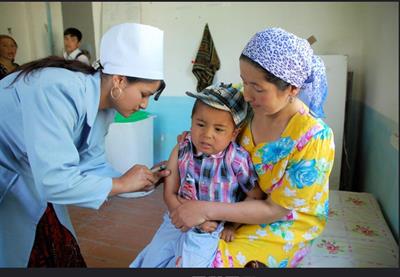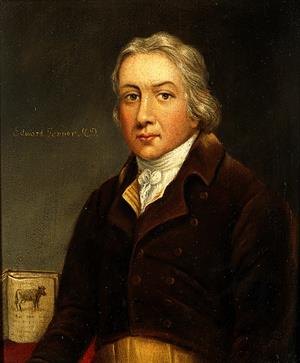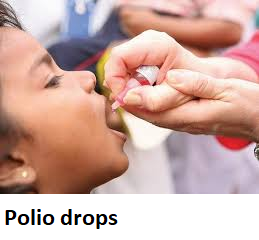
PUMPA - SMART LEARNING
எங்கள் ஆசிரியர்களுடன் 1-ஆன்-1 ஆலோசனை நேரத்தைப் பெறுங்கள். டாப்பர் ஆவதற்கு நாங்கள் பயிற்சி அளிப்போம்
Book Free DemoWhy we need immunisation?
Our immune system will respond to any foreign pathogens invasion on our body. But in the case of some germs or pathogens, our immune system isn't quick or strong enough to prevent it from causing infection. So humans need immunisations to protect the body from harmful infectious agents causing diseases.

Vaccinating a child
In the modern world, pandemic and epidemics have become one of major problems. Due to some newly generated infectious agent (Corona virus) and their transmission mode, they can easily create a pandemic disease.
One efficient way of controlling the spread of these kinds of infections is to strengthen the host defences. This strengthening of defences can be accomplished by immunisation. Immunization is one of the cost-effective weapons of modern medicine when a large proportion of a community is immunized against the disease. The rest of the community benefit because it does not spread.  Before learning about vaccines, we must first understand words like antigen and antibody.
Before learning about vaccines, we must first understand words like antigen and antibody.
One efficient way of controlling the spread of these kinds of infections is to strengthen the host defences. This strengthening of defences can be accomplished by immunisation. Immunization is one of the cost-effective weapons of modern medicine when a large proportion of a community is immunized against the disease. The rest of the community benefit because it does not spread.
Immunisation is a process by which an antigens or antibodies are administered to develop resistance from specific infectious agents.
Vaccines are inoculated into our body to prevent the diseases caused by infectious agents. This process of inoculation of vaccines into our body is called vaccination.
The first artificially made vaccine used in the world:
A thousand years ago, healthy people would inhale a powder made from smallpox scabs crusts to protect themselves from smallpox disease. This method is the first known vaccination technique used by humankind.
In modern medicine, Edward Jenner introduced the process of vaccination in the year of \(1796\). According to the World Health Organisation (WHO), the Jennerian vaccination has eliminated smallpox totally from the human population.

Edward Jenner
- When a disease-causing microorganism enters the body, it produces substances that aid our bodies in recognising the microbe as a foreign agent. This substance is called antigens.
- When an antigen reaches the body, it stimulates the production of substances that aid in the fight against microbes. These substances are called antibodies.
What are antibodies?
Vaccine:
You would have taken vaccines as an infant to protect yourself from a variety of diseases. Isn't that so? Can you recall the names of vaccines? Try to make a list of vaccines with the aid of your parents.
Vaccines are preparation of living or killed microorganisms or their products used to prevent or treat diseases.
A vaccine is made up of dead or weak microbes that, when inserted into a healthy body, generate antibodies that enable them to fight and destroy themselves. Antibodies remain in the body to protect against disease-causing bacteria, resulting in the development of immunity. The procedure is known as vaccination or immunisation.
Example:
Polio, cholera, tetanus, rabies, tuberculosis, smallpox, measles, diphtheria, and pertussis can be prevented by vaccination.
How vaccines work?
Vaccines are of two types: Live vaccine and Killed vaccine.
- Live Vaccines: They are prepared from living organisms. The pathogen is weakened and administered.
Example:
BCG vaccine, oral polio vaccine.
- Killed Vaccines: Microorganisms (bacteria or virus) killed by heat or chemicals are called killed or inactivated vaccines. They require a primary dose followed by a subsequent booster dose.
Example:
Typhoid vaccine, cholera vaccine, pertussis vaccine.
- Some vitamins contain a lot of yeast and bacteria. As a consequence, some medications are made from them, such as vitamin B complex tablets.
- Insulin is a hormone released by our pancreas, but it is produced by microorganisms such as E. coli and Saccharomyces cerevisiae. Insulin derived from these bacteria is used to treat diabetic patients whose bodies do not have enough insulin.
Important!
Vaccine and Disease:
Types of vaccine | Name of the vaccine | Disease |
| Live attenuated | MMR | Measles, Mumps, Rubella |
| Inactivated (Killed antigen) | BCG(Bacillus Calmette Guerin) | Tuberculosis |
| Inactivated(Killed antigen) | Inactivated polio virus (IPV) | Polio |
| Subunit vaccines (purified antigens) | Hepatitis B vaccine | Hepatitis B |
| Toxoid (Inactivated antigen) | Tetanus toxoid (TT) | Tetanus |
| Toxoid (Inactivated antigen) | Diphtheria toxoid | Diphtheria |
Disease: Poliomyelitis
Causative organism: Polio virus - It is highly contagious. This virus enters into the brain and spinal cord through blood.
Mode of transmission: Droplet infection, sputum discharge, secretion from nose, throat, contaminated water, food and milk.
Tissues/Organ affected: Central nervous system.
Symptoms: Paralysis of limbs result in difficulty in walking.
Preventive and control measures: Salk’s vaccine or Oral Polio Vaccine (OPV) is administered.
Pulse-Polio immunisation programme:
The poliovirus is also known as an enterovirus. It is primarily an infection of the gastrointestinal tract. The most vulnerable age group is between the ages of three to six. In December \(1995\), India launched the Pulse Polio Programme. India has taken up a massive Programme to eradicate polio under Pulse Polio Immunisation Programme, in which young children are given polio vaccine drops orally.

Important!
Achievements:
- No cases of polio reported in India since \(13'th January 2011\).
- Without registering any polio case for three years, World Health Organisation (WHO) declared India as ‘Polio-free country’ on \(13'th January 2014\).
Reference:
https://upload.wikimedia.org/wikipedia/commons/0/0c/Edward_Jenner._Oil_painting._Wellcome_V0023503.jpg
https://www.freepik.com/free-photo/packings-pills-capsules-medicines_1178867.htm#page=1&query=Colorful%20pills&position=0